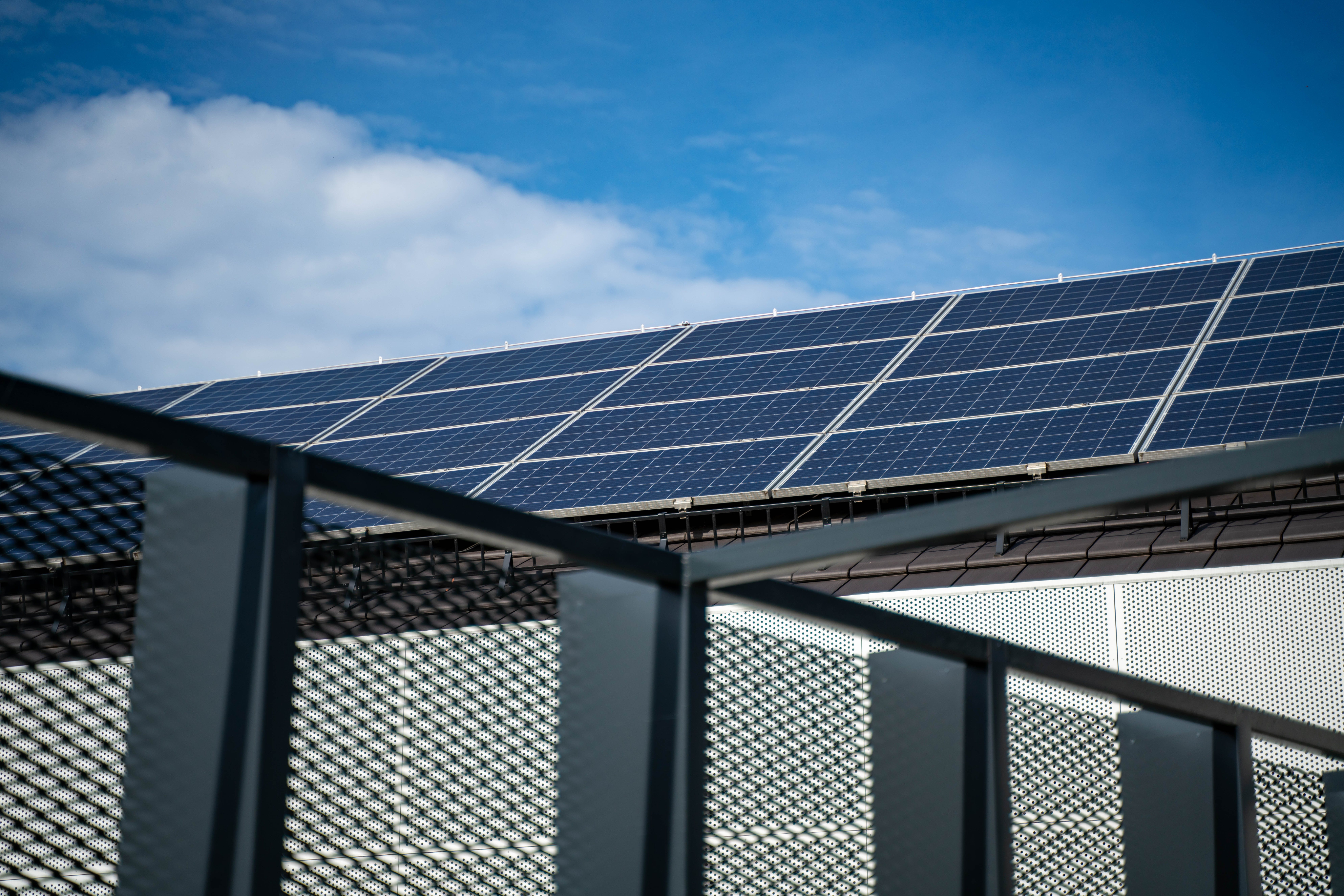Quality of Life (QoL) and Indoor Environmental Quality (IEQ) are directly connected. In fact, IEQ is one of the most fundamental and influential factors affecting our daily QoL.
🌿 1. What is IEQ?
IEQ – Indoor Environmental Quality refers to the combined physical, chemical, and biological conditions that affect human perception and health in indoor spaces such as living, working, or learning environments.
| Main Components | Specific Factors | Objectives |
|---|---|---|
| Indoor Air Quality (IAQ) | CO₂, VOCs, fine dust, formaldehyde (HCHO), microorganisms, ventilation | Promote fresh breathing, reduce fatigue, increase focus |
| Lighting Quality | Natural light, light spectrum, glare control, circadian lighting | Balance biological rhythm, enhance productivity, reduce stress |
| Acoustics | Noise, reverberation, sound insulation | Reduce stress, improve concentration and privacy |
| Thermal Comfort | Temperature, humidity, air speed, radiation | Create comfort, reduce physiological fatigue |
| (Optional: Visual & Spatial Quality) | Colors, materials, form, view to nature | Enhance positive emotions and sense of well-being |
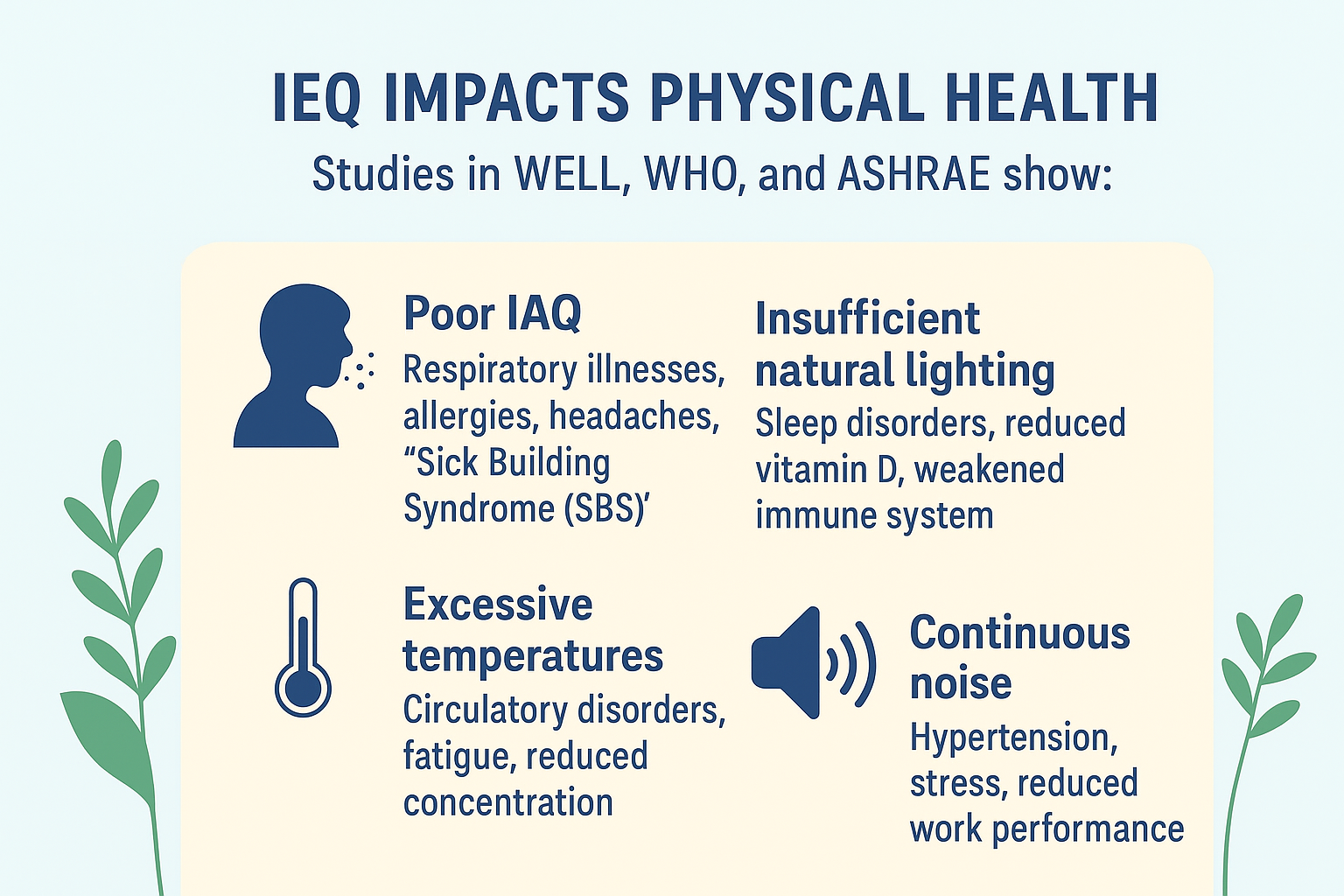
💓 2. IEQ and Physical Health
Research from WELL, WHO, and ASHRAE shows:
| Factor | Health Impact |
|---|---|
| Poor IAQ | Respiratory illness, allergies, headaches, Sick Building Syndrome (SBS) |
| Lack of natural light | Sleep disorders, low vitamin D, weakened immunity |
| Extreme temperatures | Circulatory issues, fatigue, poor concentration |
| Constant noise | High blood pressure, stress, reduced performance |
| Lack of biophilic connection | Increased anxiety, slower recovery after illness |
👉 Overall result: People living in spaces with good IEQ experience 30–50% fewer health problems and a noticeable increase in daily vitality.
🧘♀️ 3. IEQ and Mental–Emotional Well-being
Our living space acts as an “energy field” that directly influences the mind.
| IEQ Component | Psychological Effect |
|---|---|
| Natural light | Regulates circadian rhythm → better sleep, less depression |
| Natural ventilation & fresh scent | Feelings of liveliness, reduced stress, higher alertness |
| Natural sounds (wind, water, birds) | Aids meditation, lowers cortisol, promotes calmness |
| Natural materials & soft colors | Evoke safety, comfort, and a sense of belonging |
| Open space & distant view | Foster freedom, reduce psychological pressure |
👉 The WELL Building Standard emphasizes: “Environment is the foundation of sustainable mental health.”
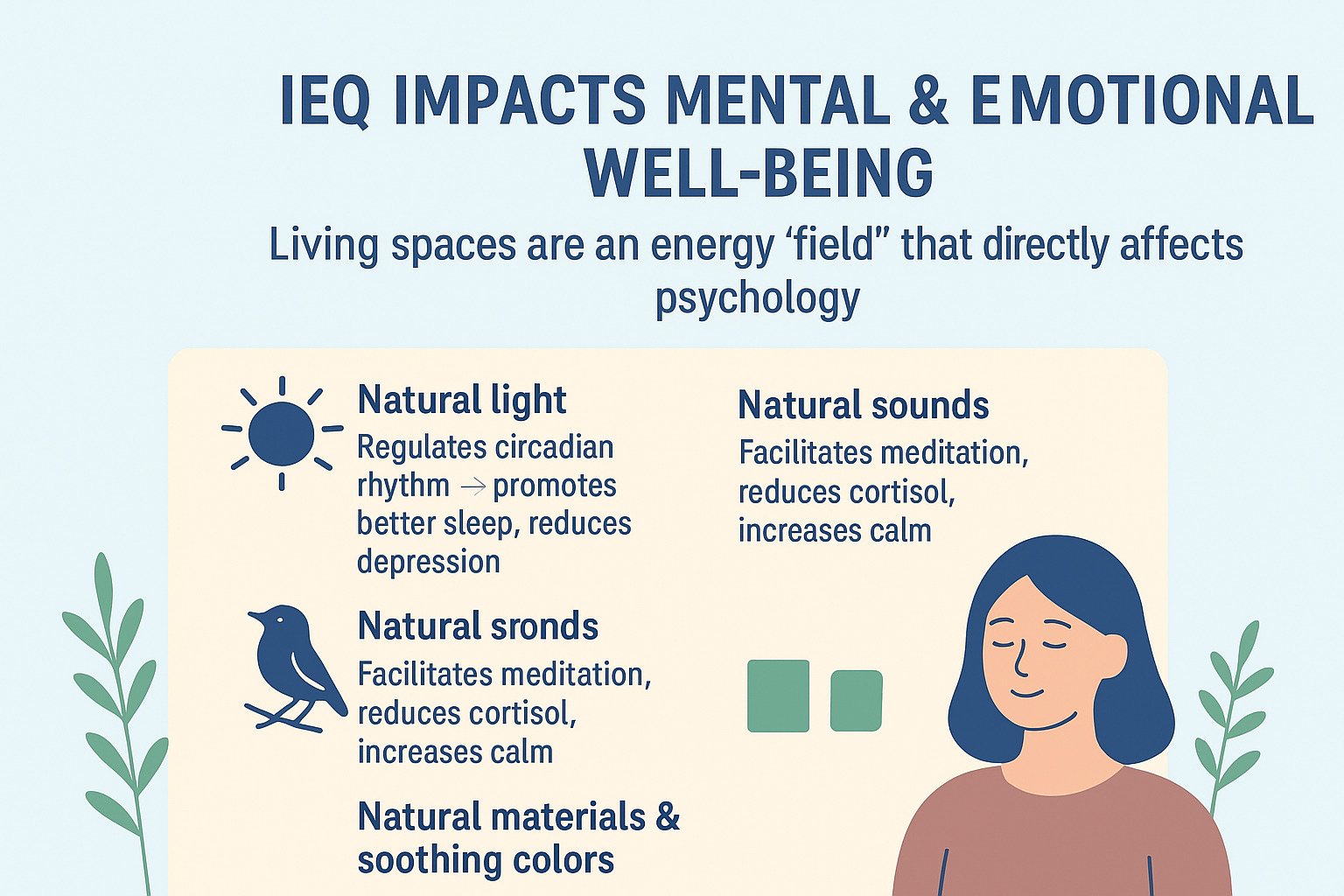
💼 4. IEQ and Productivity / Learning
Surveys in the U.S., Japan, and Singapore reveal:
-
🌬 Improving IAQ (reducing CO₂ from 1200 ppm to 600 ppm) → 8–11% productivity increase
-
💡 Optimizing lighting for circadian rhythm → 23% better focus, 18% fewer mistakes
-
🔇 Reducing unwanted noise → 10–20% higher efficiency
-
🌡 Maintaining thermal comfort (22–26°C) → 2–4% productivity boost
=> A good IEQ space is not only “comfortable” but also delivers tangible economic benefits through performance.
🌏 5. IEQ → Well-being → Quality of Life (QoL)
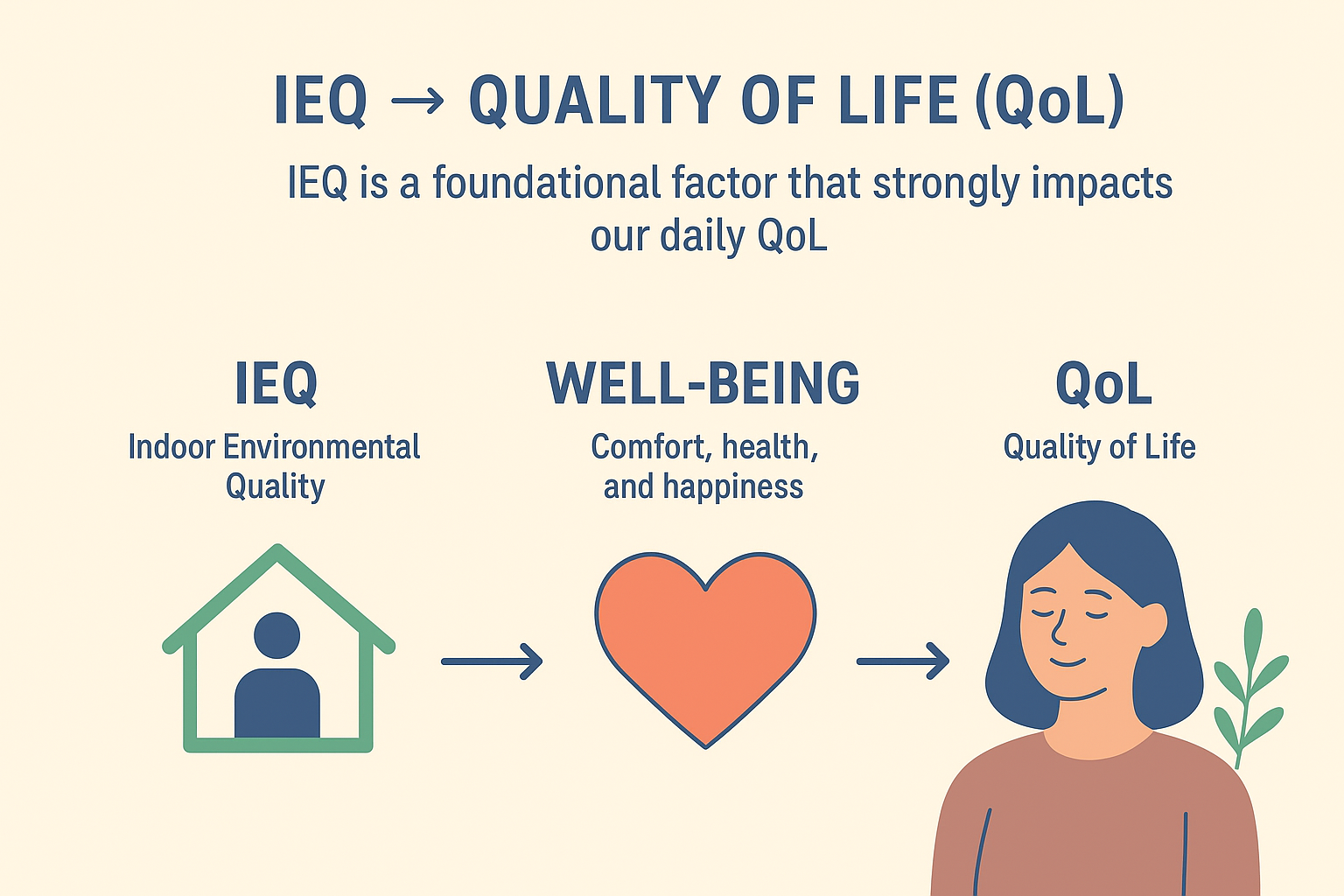
The relationship can be described as:
Good Physical Environment (IEQ)
→ Sense of comfort and safety
→ Balance of body – mind – spirit
→ Enhanced creativity, productivity & social interaction
→ Formation of a sustainable Quality of Life
In other words:
“When people live in a healthy environment, they are not only healthier — they live more deeply and meaningfully.”
🌱 6. Conceptual Model Summary
| Level | Component | Main Impact | Final Outcome |
|---|---|---|---|
| 1️⃣ IEQ (Physical) | Air, light, sound, temperature, space | Physical comfort | |
| 2️⃣ Human (Physiological–Psychological) | Health, sleep, emotion, focus | Performance, creativity, happiness | |
| 3️⃣ QoL (Quality of Life) | Inner peace, connection, freedom | Sustainable, meaningful life | Peace & holistic development |
Tags
Related news

10 Innovative Ways to Use IAQ Data for Healthy Buildings
Closing the Gap Between Data and Action For forward-thinking organizations, improving Indoor Air Quality (IAQ) is a strategic priority. IAQ...
View detail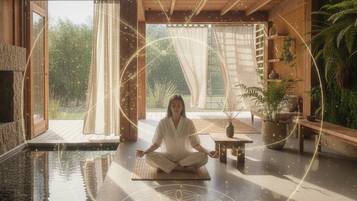
Designing the Mindful Home: From Matter to Energy
A mindful home is not merely a place to live — it is a conscious space, where every line, material,...
View detail
Body – Mind – Qi: The Foundation of Healing Architecture
The home is not only a shelter for the body but also a space that nurtures the soul and life...
View detail
